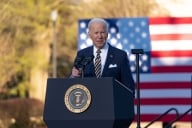You have /5 articles left.
Sign up for a free account or log in.
Institutions of higher education benefit from two groups of leaders that don't always see eye to eye. In my career, I have had a view from both sides of the fence -- as an associate professor, interim department chair, and chair-elect of the faculty senate at Baylor University during a time when the university community registered a vote of “no confidence” in its president, and recently as senior policy adviser and chief of staff to the current president of Iona College.
These multiple viewpoints provided me not only with a unique perspective of the roles and expectations that both faculty and administrators face, but also a deeper understanding of common points of contention between the two. My faculty peers may shudder at my change in tune, but I dare say: give the administration a break.
Time: As a tenured member of the faculty at Baylor, my sphere of influence is focused. Teaching, research and service are the main priorities, with hours that can run long but are ultimately under my control. Beyond class schedules, I can work at home, at a coffee shop or in my office. I can choose to work all day on Saturday and not work the following Tuesday.
Contrast that with my life for 12 months, on leave from Baylor as an executive administrator at Iona, when organizational and enterprise issues ruled the day. I was at work by 7:45 am (and the last one in the office) and leaving at 10:00 p.m. on most days (11:00 p.m. on others). Saturdays often started around 8:30 a.m. and ended at 6:00 p.m. unless there was a special event. While certainly invigorating, the experience was exhausting.
Focus: As a faculty member, I concentrate principally on the three areas noted above (teaching, research and service). As the chief of staff to the president, my attention was intense and diffused across a variety of areas: student distinction and well-being, enrollment, supporting faculty development and general academic affairs, budgets, risk management, strategic plan execution, alumni relations, the board of trustees, communication, and many others. There was no downtime. Walking across campus to a meeting was even filled with faculty and student interactions.
Schedules: Senior administrators typically have little ownership of their schedule. Whether being asked to speak at a campus function, attend a university theater production or address potential donors at a fund-raising event out of state, presidents have little possession of their day. As a faculty member, I viewed those events as social opportunities, not the job obligation they are. My attendance as a faculty member may be recognized only by a few peers or students. With the executive administrative title comes a higher profile. My attendance at events at Iona was noticed, as I was often asked to give an impromptu welcome or introduction. I found this recognition initially surprising, but learned quickly the interest university constituents have in hearing from senior administrators. With high interest also come high expectations.
Expectations: Never have I seen presidential expectations higher than when I joined Iona as chief of staff to assist in the transition of its new (and first lay) president, Dr. Joseph E. Nyre. He walked into a challenging situation, faced with the aftermath of misreporting of data, which came to light shortly after he took office. Swift and decisive action was needed, and I was fortunate to have a seat at the cabinet when an institution’s integrity and mission were under fire. I saw how a president can rise to overcome severe challenges while leading an institution into the future. I learned firsthand the value of transparent, service-based leadership grounded by humility and integrity.
Communication: Each meeting with a group is a communication test for a president that requires genuine attention, topical acumen, and energy. If a president is too quiet in a meeting or appears distracted, rumors often start of a larger problem or lack of interest. Often at the moment when my patience was being tested, the president would cultivate challenges to his ideas, perceptions and conclusions; demonstrating that leaders do not live in an ivory tower, and that dissenting voices offer insight. Good presidents don’t fill the room with nodding heads; they fill the room with dissenting heads.
Strategy: At Iona, I observed a college developing and executing a strategic plan. The president consistently asked for input from faculty and staff at the creation and implementation stages. The president led town hall meetings to provide a progress update and respond to questions. This was my first experience with a president meeting with faculty, staff, and students in this way. It was refreshing, exhausting and time-consuming, but very important.
In contrast, I watched Baylor University struggle mightily about 10 years ago with a strategic plan that was created with limited faculty input and implemented from the top down by a (former) president who did not tolerate being challenged. The plan, while supported by all groups on paper, was poorly executed and gave a strong appearance of disproportionately favoring certain faculty and programs – typically the kiss of death in higher education.
As I transition back to being “just a faculty member,” I leave you with a few takeaway points:
- The president is the face of the university. In this context, presidents, like any good leader, have a significant dislike for surprises. If issues arise, it is best to inform the president’s office as soon as possible because they will learn about it soon enough.
- Acknowledging certain groups more often or with more excitement than other groups does not automatically equate to preference, funding allocations, or institutional priorities. It is often just part of the job. This is especially true at universities with high-profile athletic programs.
- Faculty members need to grasp a broader understanding of the complex tasks and unrelenting schedule of today’s president. This includes knowing there are many pieces to the puzzle and that faculty, while a large piece, are not the only piece.
- Once trust is established, faculty and staff members need to have confidence their president is making the best decisions for the institution. For myriad legal and other reasons that I did not appreciate until recently, faculty or staff members often will not have access to all the information used to make decisions. Presidents need to be as transparent as possible, involve their constituents in decision-making, and stand in front of these audiences to answer questions.
Spending time on the “dark side” has proven invaluable in developing a greater perspective on leadership in higher education. While I am not suggesting faculty should blindly drink from the proverbial firehose of administrative rhetoric and actions, I would highly recommend a brief walk in the senior administration’s footsteps.








